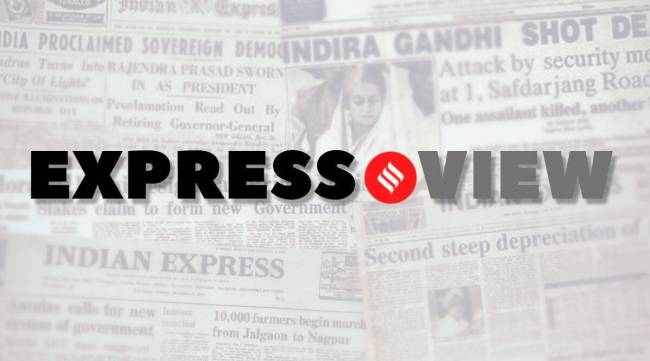Opinion Express View: Supreme Court order on EWS quota can redefine welfare
Caste continues to be the primary category of discrimination, but norms of deprivation could also include gender, economic status, region and so on. That will need heavy lifting, social, economic and political, and could, three decades after Mandal, reshape the politics of affirmative action towards being much more inclusive
 The 103rd Amendment, passed by Parliament in 2019, had inserted clauses in Articles 15 and 16, which allowed the government to introduce quotas for economically weaker sections of the society that did not avail of other reservation verticals.
The 103rd Amendment, passed by Parliament in 2019, had inserted clauses in Articles 15 and 16, which allowed the government to introduce quotas for economically weaker sections of the society that did not avail of other reservation verticals. The majority verdict by the five-judge Supreme Court bench endorsing the 103rd Amendment offers an expansive view of the affirmative action vision offered by the Constitution. The 103rd Amendment, passed by Parliament in 2019, had inserted clauses in Articles 15 and 16, which allowed the government to introduce quotas for economically weaker sections of the society that did not avail of other reservation verticals. The majority verdict has rejected a challenge against the amendment, which argued that it violated the basic structure of the Constitution. The dissenting judgment by Justice S Ravindra Bhat has held that while an economic quota is justified for accessing public goods including subsidies (Article 15), it can’t be extended to reservation (Article 16), which seeks representation of the community. So far, legal and policy debates on structural discrimination in India have focussed mostly on the social category of caste: Instruments such as scholarships were mooted to alleviate economic inequalities whereas reservations in education and employment were instituted to end discrimination rooted in caste.
The Modi government’s decision to introduce EWS quota and the SC imprimatur on it moves the needle beyond the Mandal debate, which weighed in favour of caste reservation. Expectedly, parties that claim the legacy of social justice movements such as the DMK and Dalit groups have raised the apprehension that the introduction of a 10 per cent EWS quota could impinge on the opportunities available for Dalits and OBCs, suggesting that the move is politically fraught with the potential to polarise on caste lines. The government must engage with the concerns flagged in the dissenting judgment and address the fears of Dalits as well as socially and educationally backward classes. The EWS quota is of a piece with the Centre’s attempt to fashion a new welfare architecture by reading class with caste. It has imbibed the spirit of creamy layer, formulated by the apex court in Indra Sawhney (1992) to exclude the economically better-off OBC candidates from the ambit of reservation, to explore differentiated quotas for the OBCs as well as religious minorities. The Justice G Rohini commission on OBC subcategorisation, the move to look at the conditions of Pasmanda Muslims, the panel to look into quotas for Dalit Christians, all recently constituted, are premised on the principle that economic well-being has to be considered in policy deliberations on discrimination. This shift in approach towards social inclusion and welfare, even without diluting the existing reservation for SCs, STs and OBCs, may lead to a reconfiguration of political allegiances.
Caste continues to be the primary category of discrimination, but norms of deprivation could also include gender, economic status, region and so on. While the step to include poverty as a cause of discrimination and to propose redress is welcome, expanding the economic pie remains the principal imperative. That will need heavy lifting, social, economic and political, and could, three decades after Mandal, reshape the politics of affirmative action towards being much more inclusive.





